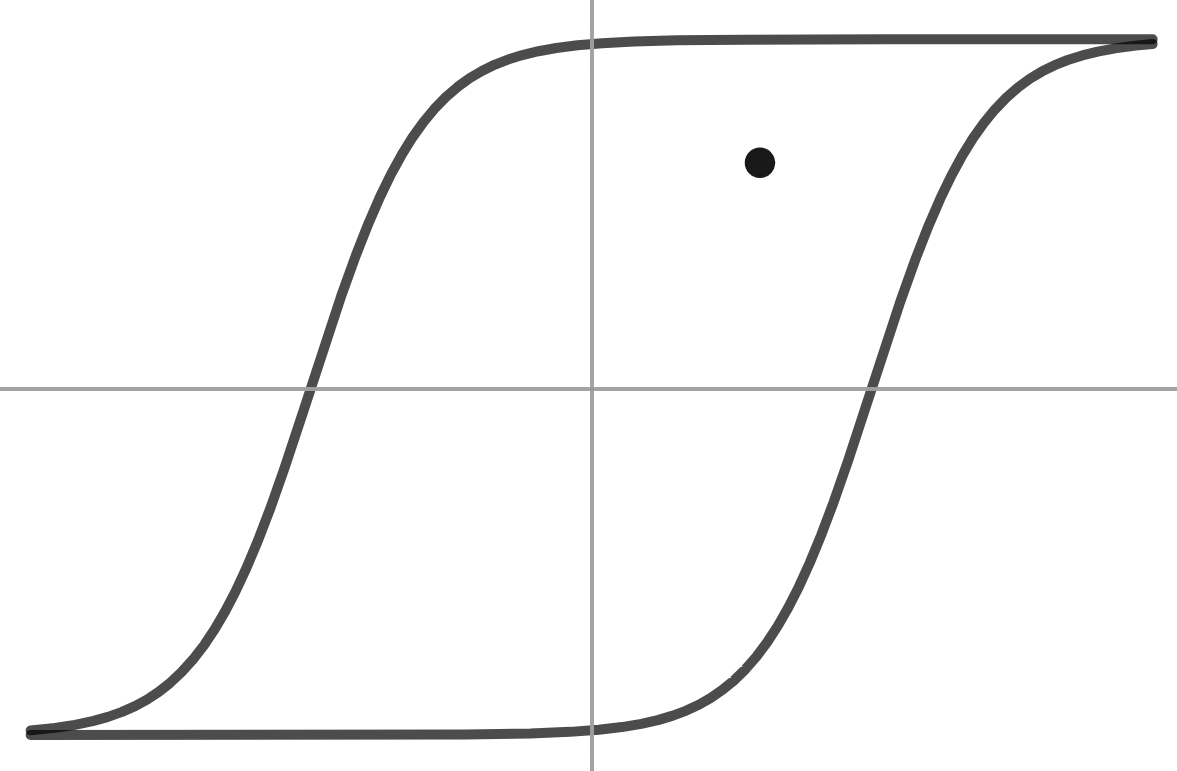


In recent years, many linguists have been heard lamenting the influx of physicists into our discipline. However, rather than fearing this trend, should we not welcome the fresh insights they can bring to many linguistics problems?

Hypothetical “wugsteresis curve” that linguists physicists should begin investigating immediately.
Consider the hysteresis curve that results when an alternating magnetic field is applied to a ferromagnetic material. A simple examination of this reveals the unmistakable profile of a wug. This casts light on the hitherto unexplained fact that when two wuvg1 are seen together, they always face the same direction. They are clearly aligning their magnetic fields.
In the late 1980s, the quark model of physics inspired the then-
Of course, the uncertainty principle has long been a part of linguistics. How long for? We’re uncertain. But it’s clear that most linguists exist in a superposition of states: simultaneously being experts in language and entirely bewildered at its oddness. These states spontaneously collapse when observed by funders or tenure committees. The resulting measurement is best approximated by the “many worlds” approach, viz, that most linguists live in a world of their own. Many-
High-
However, despite these early successes, the field was thrown wide open when in an important paper on the putative parallels between quarks and quirks, Chichuul, Peschanka, and Rennmaus pointed out that predictions about certain classes of messoffs were not only not borne out by experiment, they violated the most basic common knowledge of the field: Messoffs comprising strange quirk and anticharm quirk were in fact massively stable, whereas in a striking violation of the standard model those comprising antistrange and charm were only observed briefly in very high-
s mesons since they are usually the ones, alas, making As in our classes.”
In phonology, we can predict that heavy syllables should be prone to decay of the nucleus. This can be related to syntax via the Move-α process.
Astrophysics has contributed more than its fair share to the advancement of linguistics. The concepts of “inferior conjunction” and “superior conjunction” were just what we needed to explain why it bugs us whenever our pretentious colleague uses as where because would do just fine. Along similar lines, our feelings about if’n are perfectly well summed up by the term opposition.
General relativity can be applied to the meta-
Particle physics also has extensive linguistic applications. According to recent linguophysical theories, there may exist a class of particles known as “illocutionary force carriers.” In addition, up and down quarks are thought to play some role in tone upstep and downstep. Other particles that may be involved in linguistic and academic writing include the graviton, which produces gravitas, and the gluon, which holds theories together. Currently there is no evidence for the existence of either of these. Another postulated particle is the Higgins Boson, which lends sociolinguistic weight to dialects. Once construction of the Suprasegmental Supercollider is completed, it will at last be possible to test these conjectures empirically.
The work of Clotron, et al., still stands as the leading edge theory in nuclear linguistics. Nevertheless, linguistic physics has led to brand new discoveries, such as using the Linguistic Interference Gaussian Observer to uncover the exact shape of gaggles of graduate students around a keynote speaker: a finding that proved the existence of ego-
Of course, the insights can and should flow both ways. We suggest that physicists may find great value in calquing Construction Grammar into their theoretical framework, as it may lead to the revelation that even the most fundamental facts and forces are nothing more than mere conventions that matter has adopted from the physical community in which it finds itself.3
1 We prefer to use the plural form from the original Nappaholihok (see Traming 2017), since the wug is native to the land of the Nappaholi (see Venditto 2017).
2 Usually ones involving much better liquor than linguistics departments serve.
3 By the way, physicists: this is exactly how dumb you sound when you spout off in matters linguistic that you don’t actually know anything about. Stay in your lane!